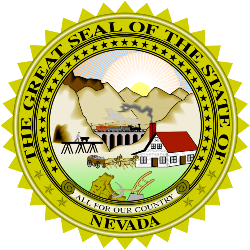Vote for ‘None of These Candidates’ Reaches Record High in Nevada
That can happen with two historically unpopular major party presidential candidates and a state law that gives voters a chance express support for no one

Across the last 11 election cycles since 1976, Silver State voters have been presented with the option to vote for ‘none of these candidates.’
And on Tuesday, a larger share than ever of presidential election voters rejected the available candidate choices and selected “none of these candidates.”
With all precincts reporting, 2.57 percent of Nevada voters chose this ballot option – more than 4.5 times as many as 2012 when just 0.57 percent voted for no one.
In fact, less than one percent of Nevadans voted for ‘none of these candidates’ in the previous four presidential contests: just 0.54 percent in 2000, 0.44 percent in 2004, 0.65 percent in 2008, and 0.57 percent in 2012.
Prior to 2016, the previous high water mark came in 1976 when 2.53 percent of Nevadans checked the ‘none of these candidates’ box.
During that cycle, Nevadans were presented with two major party nominees – neither of whom won the states’ primary earlier that May (Ronald Reagan won the Republican primary and Jerry Brown won the Democratic contest).
More than one percent of voters selected ‘none of these candidates’ in four other cycles: 1.69 percent in 1980, 1.38 percent in 1984, 1.98 percent in 1988, and 1.21 percent in 1996.
In Nevada’s high profile U.S. Senate race between Democrat Catherine Cortez Masto and Republican Joe Heck, 3.8 percent chose to vote for no one.
Follow Smart Politics on Twitter.

“…1.98% in 1988…( __%in 1992) and 1.21% in 1996” It seems that Perot was in practical terms the stand-in for “None of These” – though by 1996 even he was not deemed an acceptable alternative to the two main contenders, even in the Silver State (either that, or the ’92 figure was unintentionally omitted).
As for 2020, with the identity of the R nominee all but decided, it seems, the “none” option is all but certain to reach the 1% mark. If the D nominee were to position himself not close enough to the centre, then the aforementioned option is bound to reach the ’76 and ’16 levels, if not higher.